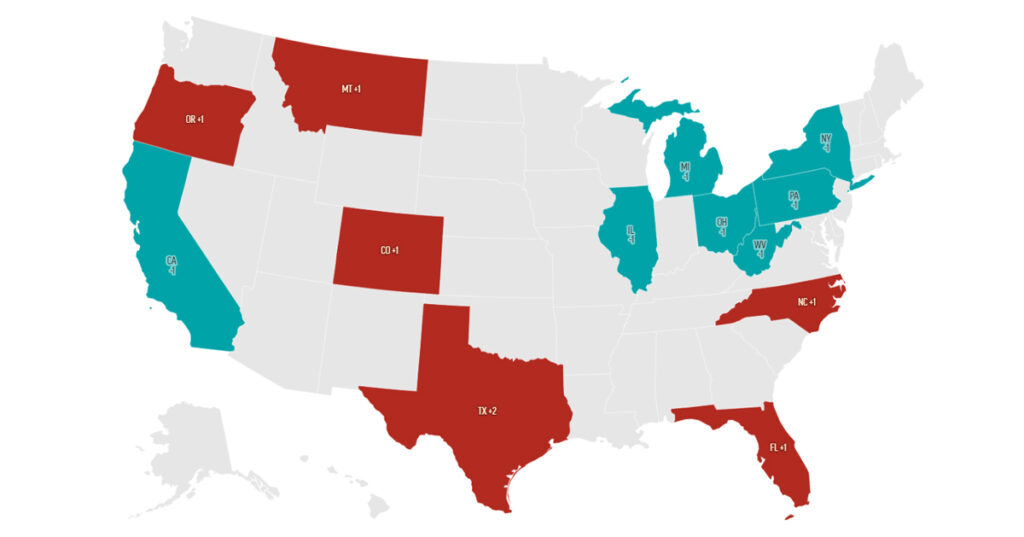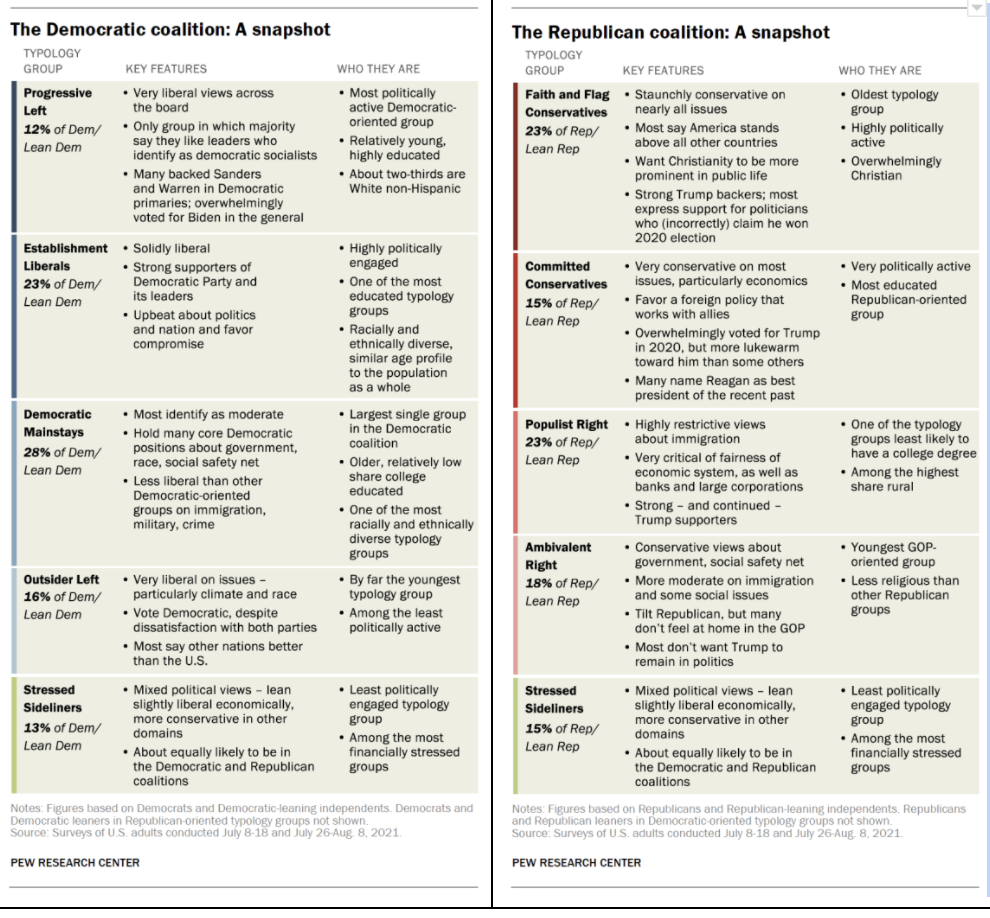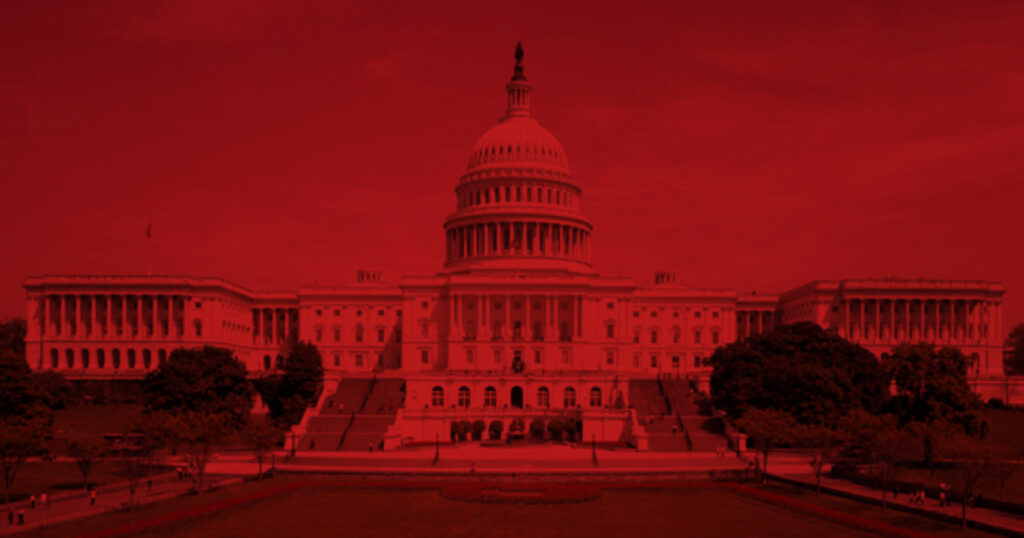
In a letter to the Abbés Chalut and Arnaud, on April 17, 1787, Benjamin Franklin said:
“Only a virtuous people are capable of freedom. As nations become corrupt and vicious, they have more need of masters.”
As media and social channels spoon-feed division and frustration between Americans, the foundations of a free representative democracy see more than stress fractures but full upheavals in the bedrock of our ability to self-govern.
Now, the Pew Research Center has inserted a spectrum across the two political parties, where American’s are categorized into nine different typologies: Progressive Left, Establishment Liberals, Democratic Mainstays, Outsider Left, Stressed Sideliners, Ambivalent Right, Populist Right, Committed Conservatives, and Flag and Faith Conservatives.
Language and descriptions are critical to providing accuracy and neutrality. Yet, even in the research institutes, there is disparity created in the terminology. The spectrum leverages adjectives as more ways to label people, rather than descriptions to clarify thoughts. ‘Outsider left’ describes those barely within the blue camp while ‘Ambivalent right’ describes those barely within the red camp.
Rather, the Pew typologies are like a scatter chart that has been rangled into sliding scales to further fuel internal discord within parties, in addition, to holistically. Take a look at the key features listed in the Pew images from its Beyond Red vs. Blue: The Political Typologywrite-up.

Moving past name-calling and labels, looking at the breakdown of the attitudes and values presented in the data, three key themes jump out:
- There is no center, just stressed sidelines
- Researchers (political AND marketing) love identity politics (code name = demographics)
- Civics continues to move more toward American self-hatred rather than self-governing
The stressed sidelines are the least involved in politics and fall categorically in the center of the spectrum, but according to the analysis, without any clear tying bind beyond distrust for people and financial corporate structures alike.
This lack of center leads to the second point regarding research in general focused highly on demographics to break down values that drive key political issues. The focus on “who they are” is central in Pew’s display of the data – much more so than issues. Most of the analysis shows a breakdown by age, race, education, rural vs. urban, and financial capability.
For a study posed to be focused on attitudes and values, the researchers put more emphasis on your zip code, race, and age to develop the nine typologies than actual values and perspectives. Further – what is good for Pew clickbait and more political division – focusing on trigger words associated with each party takes a clearer priority in the snapshots than actual comparative facts.
For example, the Pew snapshots highlight the Republican spectrum split on Trump vs. Reagan as a major player but tuck the Obama vs. Biden split into the deeper analysis for the Democrat spectrum. Through identity politics, the variety of differences among liberals is hidden, yet targets the Republicans to try and create more fractioning.
One final note from the Pew research. When looking for what is common across the entire political spectrum – the closest American’s can get to a common value is “spending time with family” – and that takes into account a low of 60% among Progressive Left to a high of 79% among Faith and Flag Conservatives.
The fractions and divisions continue the narrative of American self-hatred; where it is easier to bash the nation that provides citizens their voice through freedom of speech than to stand up for the virtue of that freedom (and the others) and take on the responsibility of governing ourselves as individuals and representing American values in our legislative and executive branches of government.
Where do you see our President and Congressional Representatives leading American values?
More from America’s Citizen Press
More you might like




PEW’s attempt to slice the two dimensional pie may result in 9 pieces, but is oblivious to the third dimension, perhaps titled “Spiritual.” That would cut across all 9 perspectives and split the racial, ethnic, and even religious labels and would be descriptive of the observed reality.
Add another:
Frustrated Right, Lean Right.
& add Spiritual Right, Lean Right
to mix
Now Pew redo poll, survey